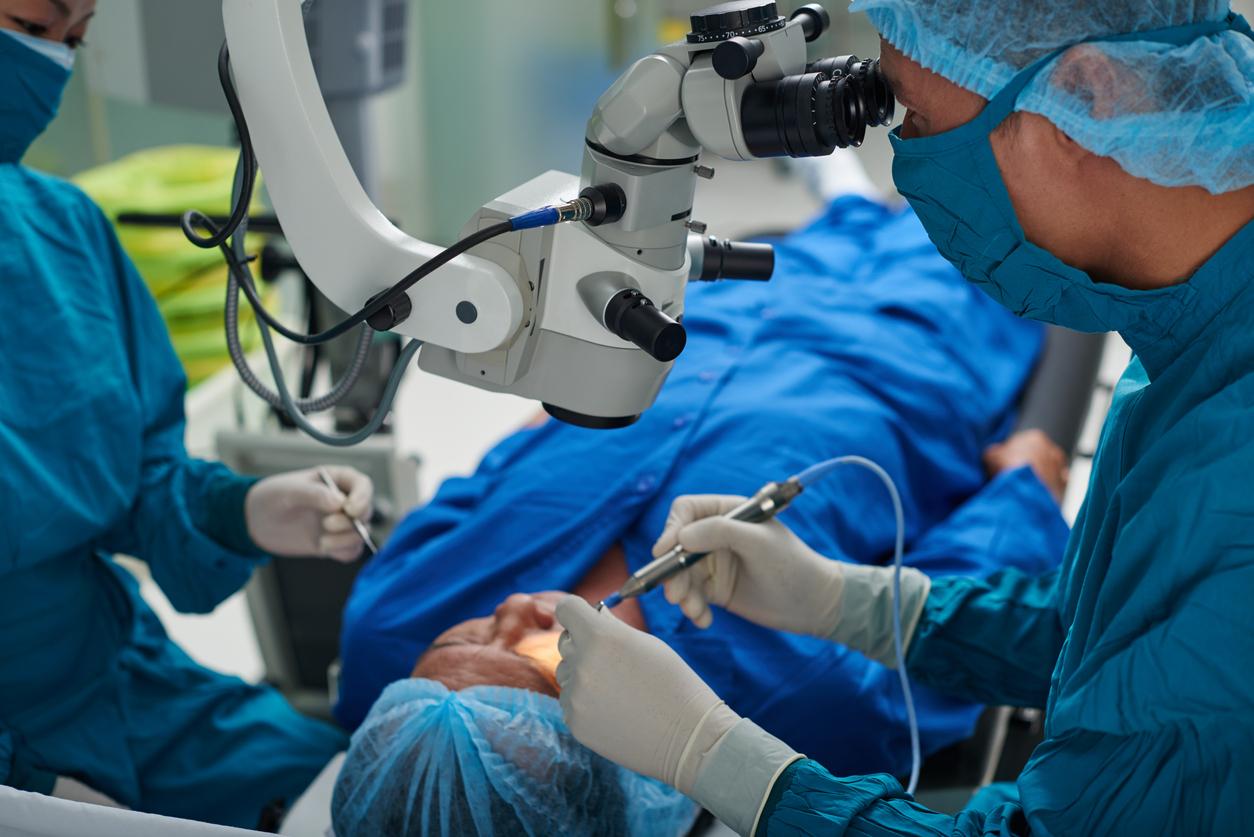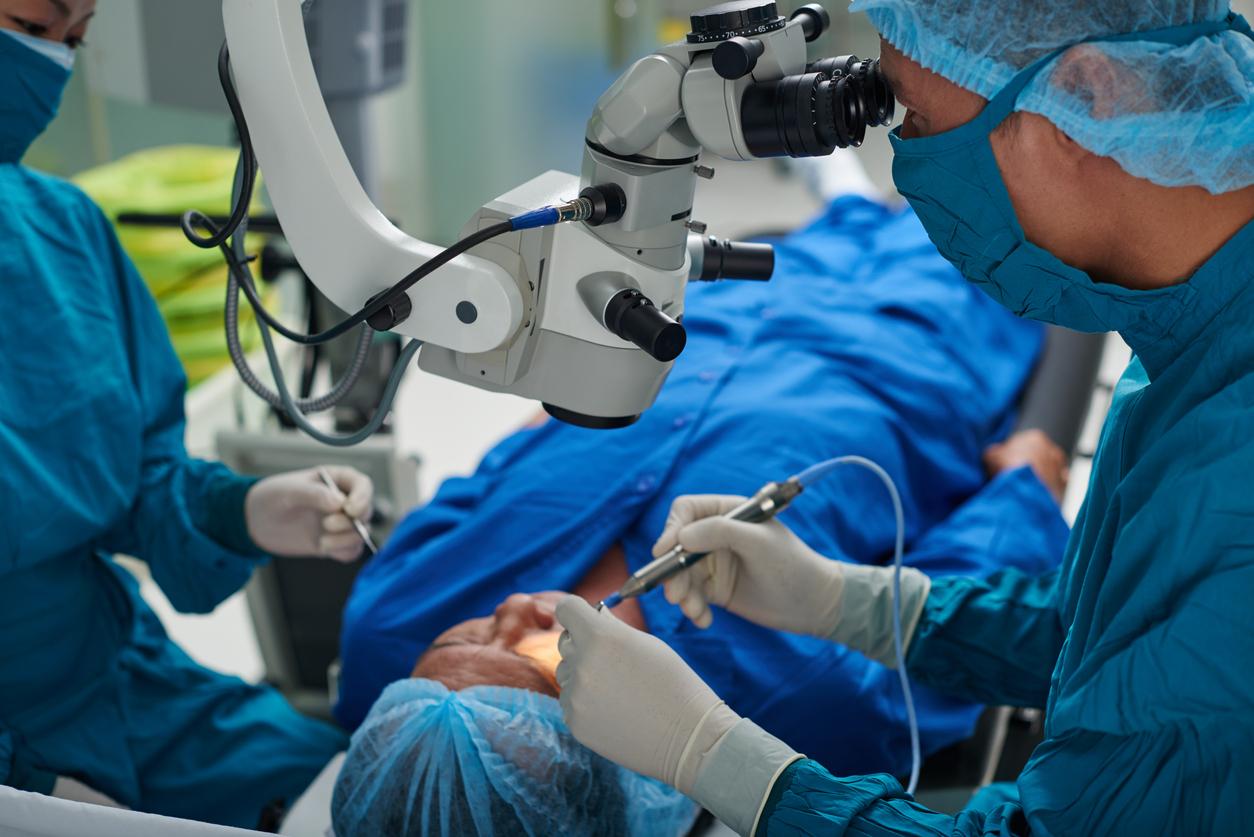Lens models implanted during cataract surgery increase the risk of hypertonia, an increase in pressure in the eye which can cause glaucoma.

- Lenses implanted as part of cataract surgery increase the risk of ocular hypertonia.
- This increase in pressure in the eye is one of the risk factors for glaucoma.
- The ANSM recommends consulting a healthcare professional in the event of vision problems in people who have received these lenses.
Intraocular lenses implanted to treat cataracts present a quality defect. The National Medicines Safety Agency alerts patients and healthcare professionals in a communicated, published on October 6. “We have been informed of a quality defect impacting certain batches of preloaded intraocular lenses, surgically implanted in the eye during cataract operations., she elaborates. This manufacturing problem increases the risk of ocular hypertonia, an increase in pressure in the eye, the main modifiable risk factor for glaucoma. This eye disease causes the progressive destruction of the optic nerve.
Ocular hypertonia: lenses implanted against cataracts increase the risk
According to the ANSM, several batches of implanted lenses are affected. This includes models manufactured by the companies Nidek Co Ltd (model Eyecee One) and STAAR Surgical Japan (model KS-SP). All were used from December 10, 2021 and until March 30, 2023.”Nidek and STAAR have recalled all the lenses concerned from the implanting centers in France, specifies the ANSM. They are therefore no longer available or used on the French market.”
For the patients concerned, in the event of the appearance of an eye disorder, the ANSM recommends consulting their ophthalmologist or the lens implanting center. Otherwise, they can wait until the next annual cataract surgery follow-up appointment.
Cataract surgery: what are the side effects of implanted lenses?
At the end of 2022, the ANSM received the first reports of ocular hypertonia following cataract surgery. Investigations have highlighted a risk of release of particles from the injector into the eye of patients at the time of implantation (calcium carbonate particles and polyvinylpyrrolidone (PVP) particles agglomerated and entangled with calcium salts ). “These particles can block the trabecular meshwork and prevent the aqueous humor from the eye from draining properly and thus lead to ocular hypertonia., explains the organization. In fact, the aqueous humor, the liquid present in the eye, is continually evacuated in principle, and the obstruction of the trabecular meshwork causes its stagnation and an increase in pressure. “This is an undesirable effect that can occur after any intraocular lens implantation, specifies the ASNM. A greater frequency of occurrence of ocular hypertonia was observed in patients implanted with these lenses.” She emphasizes that the majority of cases of hypertonia were reported in the month following cataract surgery.

Lenses withdrawn from the market: what is cataract surgery?
The latter is necessary when the disease becomes a handicap in daily activities, specifies theHealth Insurance. This operation consists of replacing the lens which has become opaque with an artificial lens, like those withdrawn from the market. This procedure lasts between 15 and 30 minutes, on an outpatient basis. According to Insermaround 600,000 people undergo cataract surgery each year in France.














